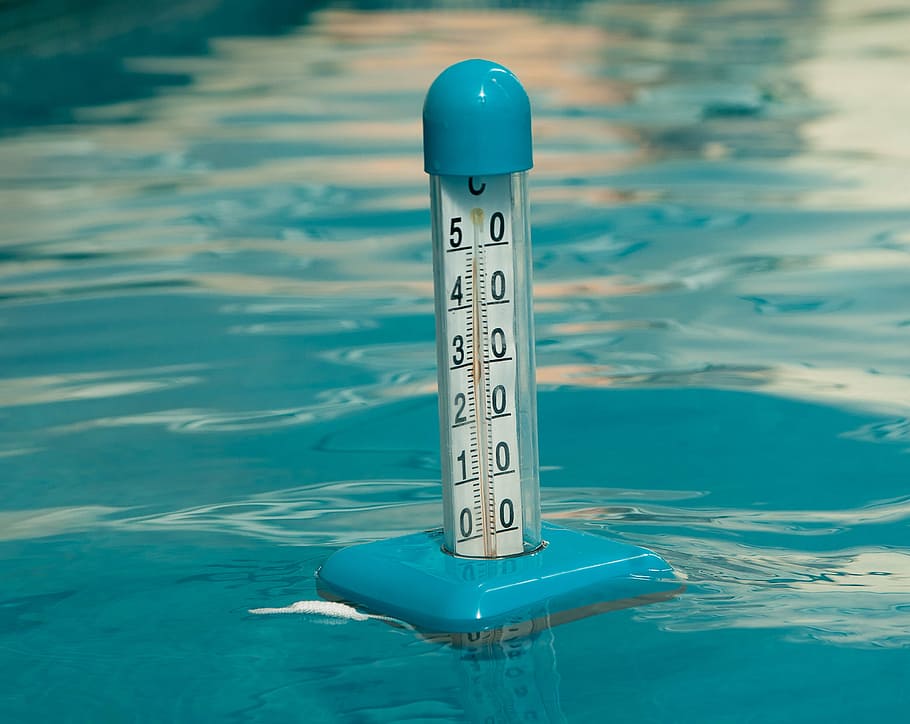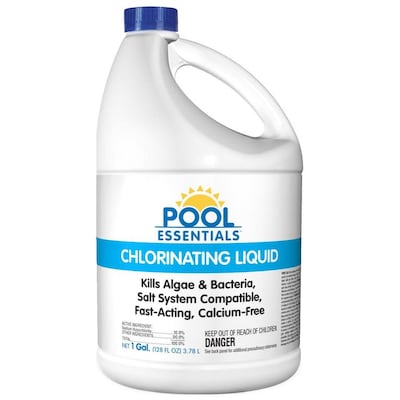Let’s face it: those green clumps on your pool wall are a pain to look at and get rid of. However, staying on top of algae growth can be easy with the correct preventative measures. Here are some different ways you can nip that algae growth in the bud.
Keep your pool temperature lower
As I previously mentioned in my list of pool care essentials, having a thermometer to track your pool temperature is important because algae loves to grow in hotter temperatures––generally 85 degrees or above. In general, many community recreational pools are kept at 82-84 degrees; as a lifeguard and swim instructor, the majority of people I’ve encountered feel that this temperature is “just right.” Plus, if your pool is in the sun, then that residual heat will help the pool feel “warmer.”
Keep the chlorine levels steady
There’s a bit of debate in the aquatics industry about what’s the “acceptable” amount of chlorine in a pool (some county pool codes allow public pools to have a level of 1-10 ppm), but a lot of pool operators agree that a level between 1-4 ppm is just right for a backyard pool. This way, the chlorine level is high enough to sanitize the water, yet not high enough to irritate skin or cause other issues. Making sure that your chlorine is always above 1 ppm will help prevent algae growth.
Use chlorine when cleaning the inside perimeter tiles
Of course, you can always use a tile cleaner when brushing the pool surface wall tiles, but using chlorine is a great alternative option since chlorine granules are like poison to algae; dumping it directly on them will halt any new growth and help clear up your pool quickly. You can either dump the granules right next to the wall and swish that water on the wall tiles, or you can dump some on the brush hairs and then start scrubbing.
Keep the PH levels steady
Chlorine and PH levels work hand-in-hand; having both of them balanced will help cure a lot of pool woes, including algae. It’s not necessarily the PH itself that stops the algae growth. Rather, it connects back to the chlorine levels. Chlorine is only effective if the PH level is also balanced, so having a PH between 7.2-7.8 will ensure that your pool’s chlorine is working properly.
Shock your pool
Believe it or not, a lot of algae growth results from one thing: chloramines, also known as combined chlorine. If you’ve ever “smelled” a pool when walking into a gym, then this is what you’re most likely smelling. These develop when chlorine molecules attach to nitrogen or ammonia, which generally happens when organic substances come into the pool (rain, urine, sweat, etc;). Therefore, shock treatments, where you raise the chlorine to 10x the amount of chloramines, are needed to rid the pool of these pesky chloramines.
To calculate this, subtract the free chlorine from the total chlorine and multiply that number by 10. This is the ppm level that you will need to raise your chlorine to. Some test kits, such as Taylor, have two separate tests so you can easily calculate both types of chlorine. However, pool test strips will also separate these out. If your test kit only measures free chlorine, you can also take a sample of your pool water to your nearest pool supply store. Once you have that combined chlorine number, then follow the instructions on your pool shock package so you know how much shock to add.
Check the filtration system
You could do all the things listed above and still have algae growth. Why? The pool filtration system is the heart of your pool. The pump is what keeps the pool going, and the filter ensures that only the good stuff (chlorine and acid) goes into the water. As a result, an excessively dirty filter, full skimmer baskets, or a broken bump will drastically change everything. Cartridge filters, thankfully, are the most common type used for residential swimming pools, which makes the cleaning easy. These look very much like air filters in your car, so the process is essentially the same.

I used to live in a house with a small backyard pool that had a cartridge filter. Here’s the process we used. We took the hose next to the pump shack, put a pressure nozzle on it, and sprayed that thing down like crazy. After that, we soaked the cartridge in a bucket of soap solution for a good couple of hours, then rinsed the cartridge down again, and then we put it back in. The most common recipe for a detergent wash solution is 1 cup of detergent per 5 gallons of water. You can also buy a cartridge cleaning solution from a pool supply store if you prefer. Regardless, both of these will help get all the grime off your filter. At this time, you’ll also want to look inside the cartridge pleats for any sticks or leaves.
If you have any pump problems, the most common issue is a simple fix: the pump just needs priming again. There are many tutorials for this on YouTube, but you can also call a pool technician if you need additional assistance. Once this issue is taken care of, then you can focus on the other methods above again.
Jehn Kubiak’s bio:
Swim Instructor in Orange County
Jehn is an aspiring aquatics manager who has lifeguarded for five years and taught swim lessons for three. Jehn has mostly taught for private swim schools, but she is also a certified American Red Cross Water Safety Instructor. Although Jehn loves teaching, she’s also a nerd about pool operations who thoroughly enjoys testing and balancing chemicals





